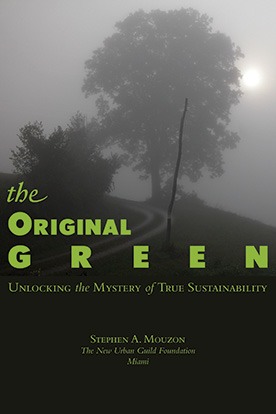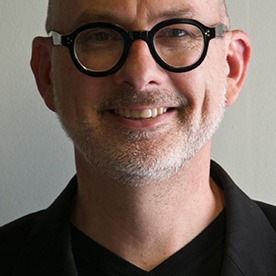search the Original Green Blog

We sorely need a forward-looking town and its surrounding region to step up and remake themselves as a world-class model of true sustainability from the level of the region to the level of the building. I've just returned from Charlottetown on Prince Edward Island in Canada, and have high hopes that the citizens there just might transform themselves into just such a place.
A few other places are making promising noises, such as Oberlin, Ohio and Greensburg, Kansas. But while the people behind them are completely well-intentioned, most of those noises are predictably about Gizmo Green measures, which are based on the premise that we can achieve sustainability with nothing more than better equipment and better materials. The reason that's predictable is because Gizmo Green dominates sustainability discussions to such a degree that most people don't realize there's anything else.

Charlottetown side street
But there is. And Gizmo Green will soon be exposed for what it really is: only a very small part of the formula for real sustainability. Here's why: We are seeing a massive population migration in many developing countries from low-impact agrarian settings into the city. We need approximately 1 car per citizen in the US. If the two most populous countries, China and India, do over twice as well as the US in their need for cars in the city, there will be over a billion cars on the road just in those two countries in a few years that don't even exist today! It doesn't matter what you think of of the reality of Peak Oil because this is Economics 101: supply and demand. Even if world oil supply keeps increasing at the same rate as it has over the past ten years, demand will quickly outstrip supply and prices will skyrocket. The recent flirtation with $5/gallon is only a prelude. Expect $20/gallon and beyond not so many years from now.

bright end to a dark day?
The speed with which this will happen is impossible to predict, but if it happens quickly enough, people will be unprepared. Many who live furthest from work will discover that they simply can't afford to live there anymore. This already happened in pockets of the US when gas first reached $5/gallon in 2008. But at $10, and then $20/gallon, many more of us will find our very livelihoods at stake. Sit down today and chart out your Web of Daily Life. Then ask youself how many parts of that web would be clipped at $10, then at $20/gallon. Could you afford to drive to work? To the grocery? Jane Jacobs and Jim Kunstler could be right… we could be in for dark days ahead.
When times are dark, people can fall off the edge into all sorts of Kunstlerian terror if they have no hope. But if there's something that gives them hope, then they can stay the course to a better future even if it's clear there is much work to be done. This is why it is so crucial to have at least one town and its surrounding region as a shining example of how to remake a place in highly sustainable fashion.

Seaside's post office
Seaside, Florida is a single little town built on just 60 acres of Florida Panhandle scrub oak and sand. Before Seaside, the only thing on the "Redneck Riviera" were condos on the beach, with T-shirt shops, gas stations, and liquor stores on the landward side of the highway. Land north of there was essentially worthless. Seaside began with a most audacious proposition expressed in the first marketing slogan: "Come Build a Town With Us." I remember seeing those billboards for the first time and being stirred nearly to my core. "Nobody builds towns today," I thought. But they did.
Here's what else they did: Because Seaside was a vacation town rather than a first-home community, it was able to spread its revolutionary thinking broadly. People came and hung their car keys on the hook on the wall. After several days of not needing to drive anywhere, they said "I really want to live like this." So some of them went back home and worked to build neighborhoods in their hometowns that were compact, mixed-use, and walkable. Because of the single great model of Seaside, a movement was born. They call it the New Urbanism. Today, there are thousands of New Urbanist neighborhoods, hamlets, villages, and towns around the world. But it all began with the single great model town of Seaside.

Charlottetown, Prince Edward Island
How does a great model emerge? Several things must happen. First, it must be located somewhere that people want to travel on vacation. Boise might be the most sustainable place in the world, but only those who are living there are traveling there on business will ever see it because Boise isn't your normal vacation spot. Because sustainability is something we must spread broadly, we need as many eyes as possible on the great model place. So it really must pass the Tourist Test. Places like this are most effective when surrounded by great natural beauty, like high on a picturesque mountain or by the sea shore.

Charlottetown corner
The next requirement is that the place must be small enough to be easily perceived. You really need to be able to drive around not only the town, but the entire surrounding region, in a day or less. New Urbanist Peter Calthorpe did an excellent plan for the Salt Lake City region several years ago. It won a number of awards. But the only way you can see the whole thing in a day is from a satellite, or from the moon. That doesn't work as a great model because the great majority of people can't comprehend it.
Seaside is a great model of a single town, and also a single neighborhood, but it's not the center of a sustainable region. And even if it were, the edges bleed out into southern Alabama and southwest Georgia in not so much as a whimper. You really need a place that is bounded decisively by natural features. Prince Edward Island in Canada meets all these requirements. As does Beaufort, South Carolina and its surrounding county, bounded by creeks, wetlands, and river.

Sir John A. MacDonald, the first Prime Minister of Canada,
immortalized in bronze. He headed up the meetings
in Charlottetown that led to the eventual formation of Canada.
It's not unusual to see both citizens and visitors sitting down to
have a conversation with him.
The place also needs to have a great story to tell. Because the new story of their sustainability makeover needs to be built on a foundation of older stories that resonate broadly with those who visit. Why? Because if the model is to give us hope, we need to feel that these are townspeople who are like us in at least a few important ways. If they seem superhuman, it's easy to think "we could never do that." Plus, if the town has no interesting stories, would you really be interested in vacationing there in the first place?
This is really important, because most people must be enticed to the place without knowing the full sustainability story because while some people are eco-tourists, the majority of people don't vacation in a place solely because it's green.

Charlottetown church building
Charlottetown and its surround region (Prince Edward Island,) unlike 95% of North American places, meets all of the requriements. It's small enough to be perceived without a ticket on the space shuttle. People from all over the region (and beyond) come there to vacation in summertime. It has an excellent town core. It has great stories to tell, starting with being the site of Canada's initial confederation. It has great sustainability stories to tell from our time as well, although those haven't been finished yet. It has a fascinating culture of creatives that form an arts community far stronger than the town's population might suggest.
I spoke in Beaufort last fall and threw down the sustainability gauntlet: "There will be a town and surrounding region someday which will choose to be a world-class model of true sustainability. That's not in question. The only question is this: will it be Beaufort?" I ask Charlottetown and Prince Edward Island the same question today: "Will it be you?" We need you. Few towns were founded in regions where they could even dream of doing this. But you were. You could hold to the status quo and miss it entirely. Or you could be the shining example by the sea. Will you answer the call? We need you!
~Steve Mouzon


